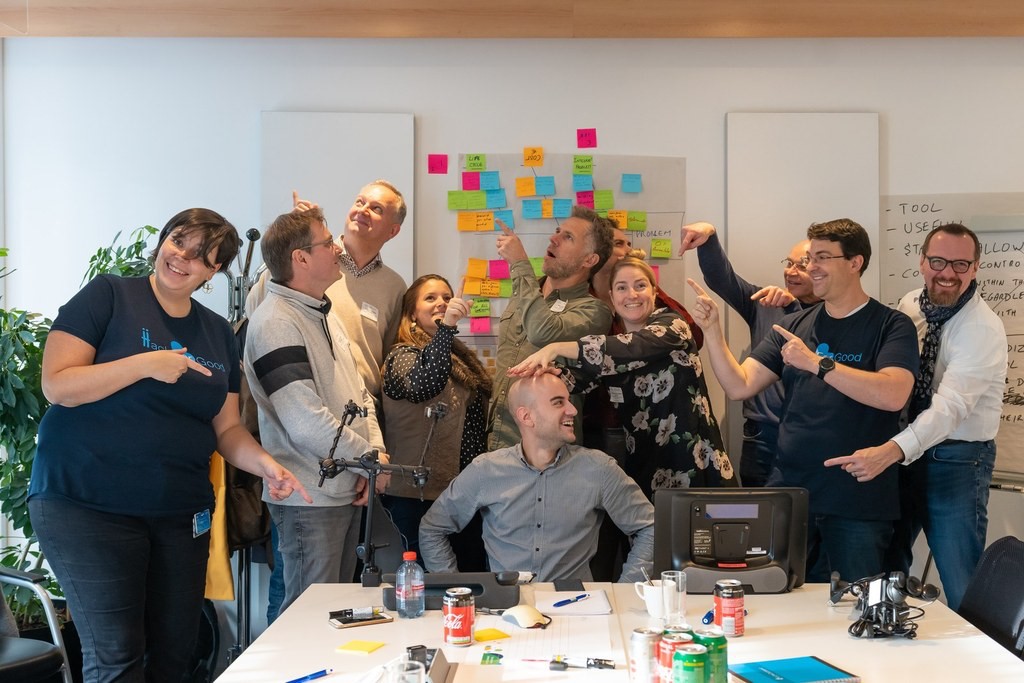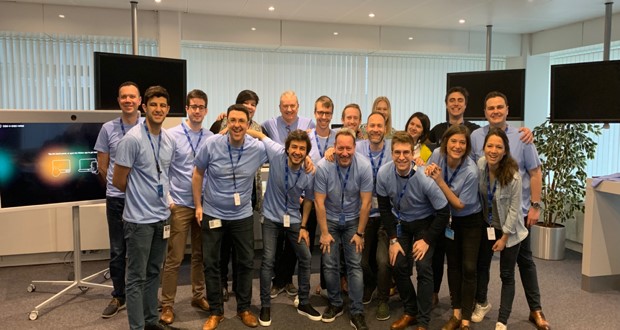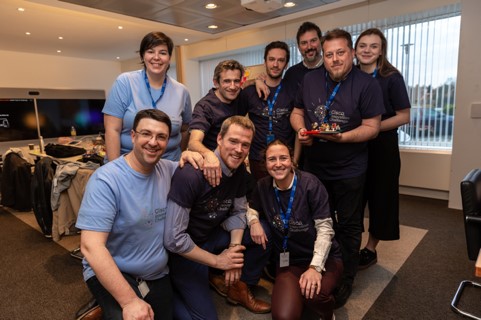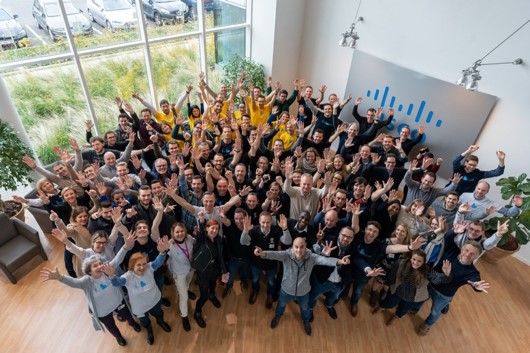 This guest post was written by Esther Roure Vila, a Customer Success Specialist at Cisco. She has 14 years’ experience on Switching, DC and BDM. She is double CCIE and Exec MBA, and 2014 European Digital Woman of the Year™.
This guest post was written by Esther Roure Vila, a Customer Success Specialist at Cisco. She has 14 years’ experience on Switching, DC and BDM. She is double CCIE and Exec MBA, and 2014 European Digital Woman of the Year™.
Register to see Esther is speaking at an upcoming Women Rock IT event on April 23rd.
Innovation is everywhere. Ask yourself, do I go with the flow, or do I stop and think: ‘Can I do it better? Can I do it faster?’ Do you find a problem and just submit to it, or find a creative solution? Let me explain to you my journey in Cisco and why I consider myself an intrepreneur.
I started at Cisco around 14 years ago, fresh from university. I found it difficult at first: a new country, a new job, and a new language. It was very busy, very stressful, but also very exciting. I am sure you all been there or will be. Luckily, I had many friends and colleagues that supported me. With time, I found myself growing comfortable, with more time, ideas and opportunities to change the world… big words, I realize now! Let me tell you about one of those times I pursued my passions.
Innovation
I first became interested in Innovation Management, the process by which ideas emerge and become a reality, about five years ago. Innovation Management is truly fascinating: some great ideas are never realized yet some seemingly bad ideas become revolutionary. What makes some ideas succeed and others fail? What is the process from idea inception to transformation and, if you are lucky, idea scaling?
I discovered that luck has little to do with it. So far, I have been involved with innovation as an Innovation Ambassador for Cisco, driving innovation sessions during the ideation phase. Sometimes innovation can be quite frustrating: it can be difficult to make an impact, or innovation becomes so focused on incremental and internal improvements that it hardly counts as innovation.
Ideas for new products, features or services from within a company can be challenging to implement if innovation management is not properly handled or there is no balance between the business as usual and investment in truly new innovation. Nevertheless, I never lost interest.
About two years ago, Hugues De Pra, chief technology officer and head of data center Belgium & Luxembourg, created the Belux Innovation Studio, a year long program with the believe that Innovation should be a new toolkit & skill set for any Cisco employee. Belux Innovation Studio gave me tools and opportunities to help customers and partners though a structured innovation process.
Showcase from HackForGood
A recent HackForGood sought to address the accessibility challenge individuals with physical disabilities have with using common remote controls to operate a television or computer monitor. The team was created by CRETH, a Resource and Technology Assessment Center for Persons with Disabilities along with Cisco partners Proximus and Telindus Luxembourg and supported by the coaching of Hugues and me.
We started with a problem that impacts millions of people in Europe alone: how to change the TV channel, or to stop a video, when faced with a physical disability. Millions of people struggle every day to do a similar task. With dozens of products on the market and few standards, creating adaptive solutions which provide independence is a real challenge.
The team contained a breadth of expertise: CRETH understands the customer or user, and Proximus and Telindus Luxembourg had the technical and business knowledge. Together we concluded that existing features in a digital standardized TV are too difficult to integrate with other appliance interfaces, and any change to the settings caused service disruption. This was also the case for applications, like Netflix, videos, messaging apps, social media, smart lighting, or other home automation apps. Accessibility to digital services needs to be constant and not disrupted by technology and setting changes.

The image above shows the team identifying two clear problems: a lack of commitment to standardization, and simple integration for enabling accessibility features. To solve the first problem, we are currently working on a universal charter to ask the commitment of service providers to the standardization of their Accessibility APIs. To solve the second problem, we are working on the creation of a PIMS, a cloud-based platform that facilitates the integration and collaboration between service provider platforms and user interfaces. We still have quite a journey ahead of us, but this is a great example of how technology improves the day-to-day lives of millions.
The Journey
How did I find this opportunity? In 2018, a cohort of ten employees including me, all with different backgrounds, supported and coached by Impact Valley, started the three-step program to grow into innovation coaches, with the objective to structure and lead any kind of innovation conversation within Cisco or externally with customers and partners.

Belux Innovation Studio program contains three elements:
Exposure – Immersive experience: participate in a hackathon and live the innovation journey first-hand with guidance from an Impact Valley coach or with an innovation coach who has already graduated from the Cisco program.
Education – Train the trainer: learn about innovation tools, how they work, how to present them, and when to use them. Innovation tools like Design Thinking, Lean Start-up, Business Model Canvas, and Collective Intelligence enable team management, energy management, and general positivity. Also important is to always consider that not just thinking to create a product or service, but rather co-creating with our customers and partners.

Experience: Innovation Challenge and HackForGood: The third element is to practice what you learn and coach a team. With this objective in mind, the cohort organized two different Hackathons, an Innovation Challenge and a HackForGood. The cohort takes care of all organizational aspects, which provides an added experience of how to prepare and manage such events.

In both Hackathons, we were able to ignite change right away! For the Cisco Innovation Challenge (summary video), we focused on the customer’s current product, which I believe was the ideal way to work on adoption and help our customer utilize their Cisco Solution to its full potential. In HackForGood (summary video) we solved the change-makers problems with a business-like mindset brought by Cisco Partners which provided value straight away. Seeing the NGOs’ problems find viable solutions was very impactful.
At the end of the Innovation Studio, all coaches were confident in using the innovation tools and have since incorporated them into their day-to-day work. A big thanks to Hugues De Pra for creating and driving the Innovation Studio, and to Arnaud Spirlet, Managing Director Belux, for sponsoring it. It was truthy a transformative experience!
This is just one example of how I contribute in the innovation conversation at Cisco. I consider myself an Intrepreneur inside of a very large corporation, and I look forward to sharing more of my experience during the Women Rock-IT live broadcast.


Fantastic